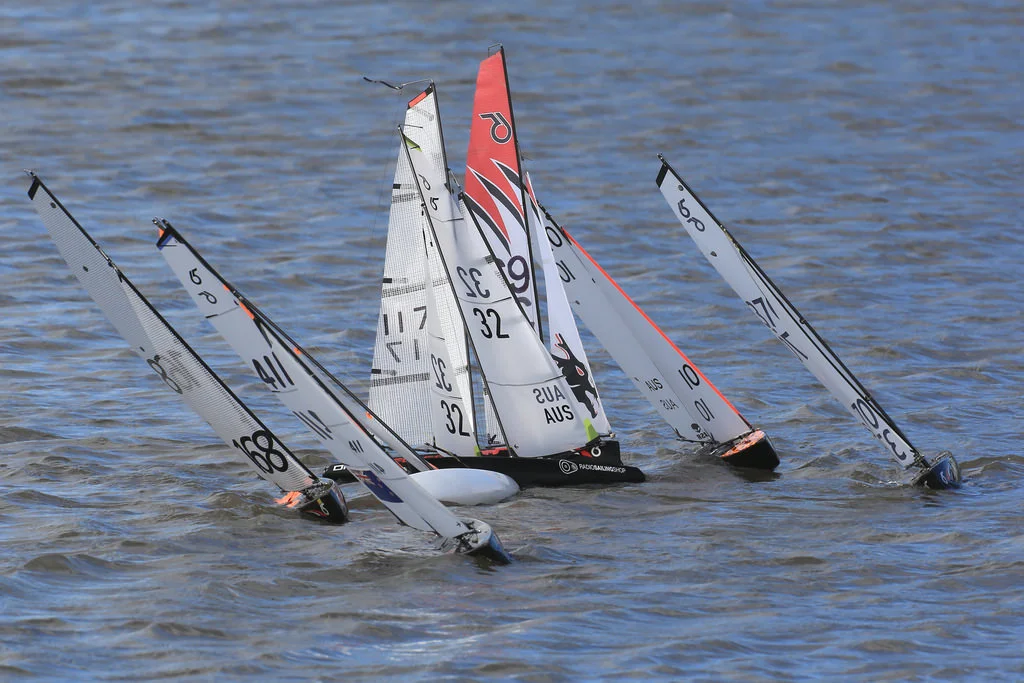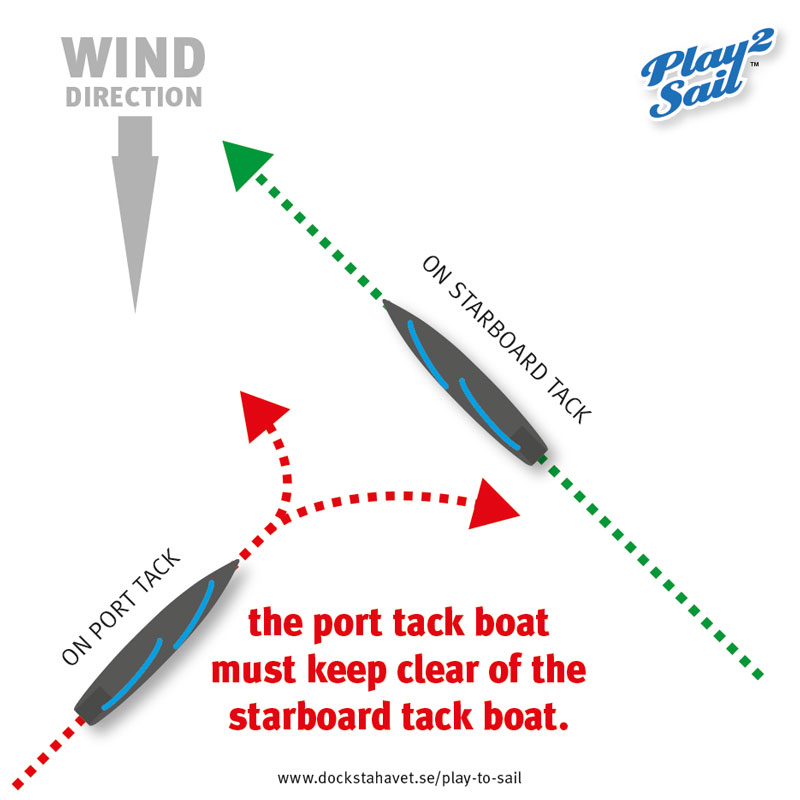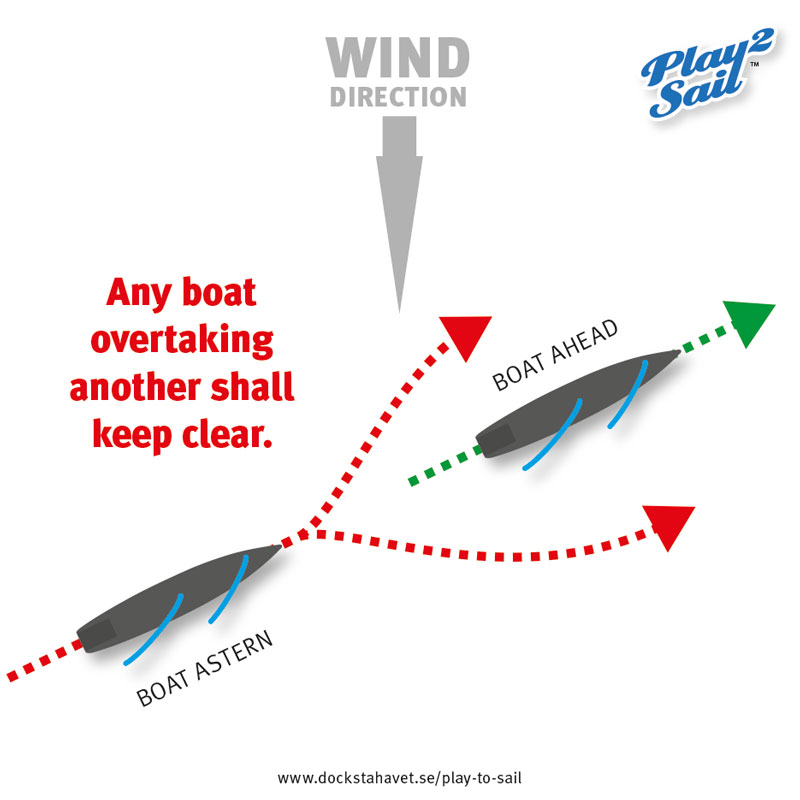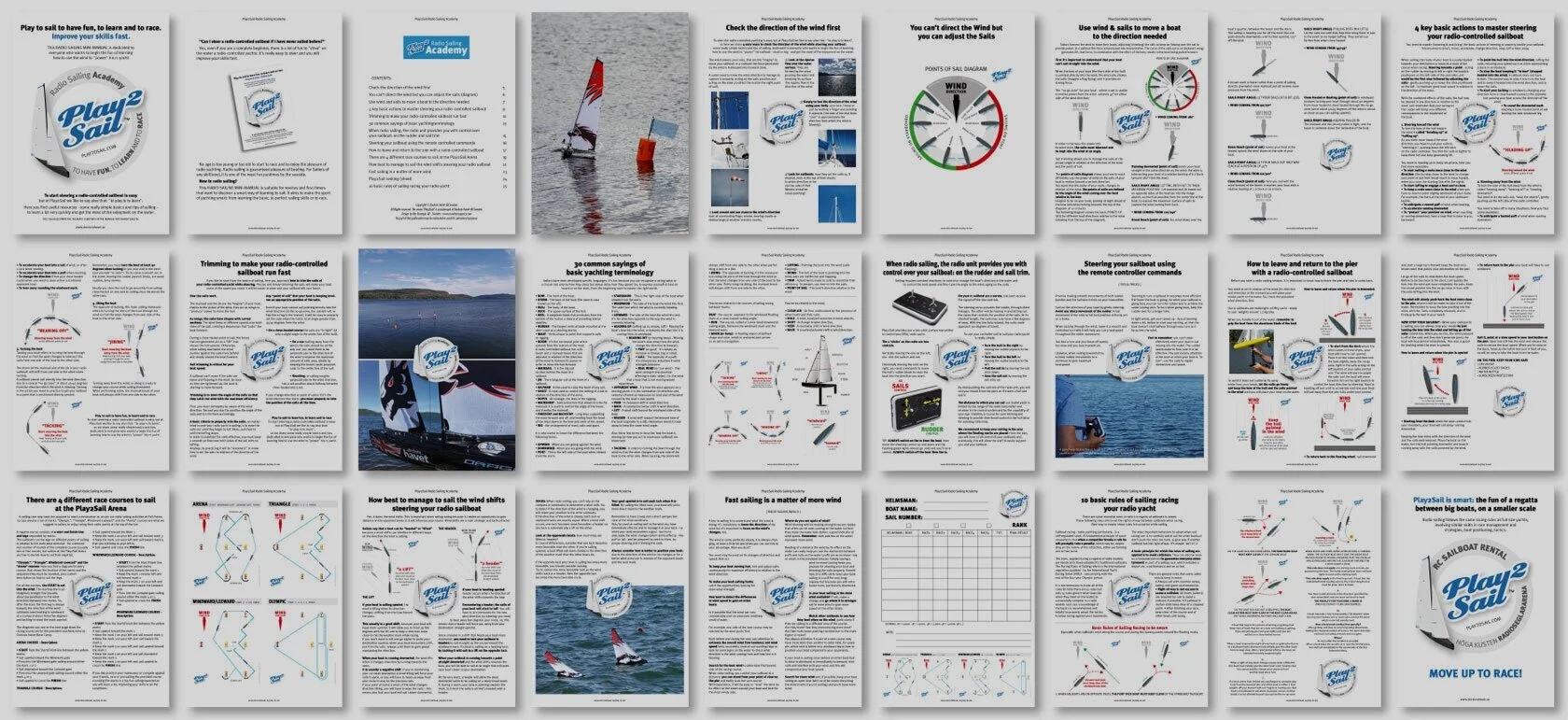Play to sail: 10 basic rules of sailing racing your radio yacht
There are some essential rules on which a regatta of sailboats is based.
A basic principle for which the rules of sailing are applied is to avoid collisions. They can also be seen as a fundamental tool to guarantee everyone entertainment as part of a sailing race, which includes a departure, a performance and an arrival.
There are general rules that every sailor should keep in mind:
Always sail with common sense, safety, and good sportsmanship.
Right-of-way is not excuse to cause a collision. All boats (sailors) are required by rule to avoid a collision if possible.
A sailboat in motion shall keep clear of a stopped yacht.
After finishing your race, keep clear of the course and of other boats still racing.
Elevate your RC Sailing skills:
Free resources at your fingertips >
As a skilled sailor, you know the value of continuous learning. Access our advanced free online resources to refine your techniques and build your confidence with expert insights. No fees, no membership - just pure learning and fun. Discover Play2Sail Academy today!
For a comprehensive deep dive, our e-manual is available for purchase, offering in deep knowledge and expert advice to take your skills to the next level.
DOWNLOAD the PLAY2SAIL manual >
Sailors from 🇺🇸🇬🇧🇦🇺🇸🇪🇳🇿🇨🇦🇿🇦🇳🇱🇩🇪🇫🇷🇮🇳🇭🇰 have already downloaded it.
Focus:
These following rules aim to set the rights of way between sailboats when racing.
Basic Rules of Sailing Racing to be aware
Especially when sailboats meet along the course and during the turning points around the floating marks.
[ Radio Sailing Basics ]
1.
When sailboats are on opposite tacks, the port tack boat must keep clear of the starboard tack boat.
Share this rule on your coffee mug:
2.
On the same tack and overlapped, the windward boat must keep clear of the leeward boat.
3.
On the same tack and not overlapped, the boat clear astern must keep clear of the boat clear ahead. Any vessel overtaking another shall keep clear.
4.
A boat that begins the process of tacking or gybing must keep clear of boats that are on a tack, not tacking or gybing. If you are tacking you lose your rights until you are settled on a close-hauled course.
5.
When a boat acquires the right-of-way (such as gybing her boom to a starboard tack), this boat must initially give the other boats room to keep clear. After a brief period of time, the boat can exercise her newly acquired rights.
6.
When a right-of-way boat changes course (even a little bit), this boat must initially give the other boat room to keep clear. You cannot quickly change your course to force another boat into a foul.
7.
If a boat comes from behind you and begins to overtake your boat from the leeward side, and if that boat is within 2 boat lengths off your leeward side as it begins to overlap you, that boat is not allowed to sail above its proper course. In other words, it is not allowed to push you up into the no-go zone.
8.
When boats are overlapped approaching a turning mark, the outside boat must give the inside boat enough room to round, provided that the overlap was established before the lead boat entered the 4 boat-length zone.
This rule does not apply at a starting mark as boats are approaching the start. The inside overlap boat does not have rights to room at the starting mark.
This rule does apply at the finishing mark. A boat that has established inside overlap prior to the 4-boat-length zone must be given room to finish.
9.
You must round all marks in the direction specified (by race committee), and you must not touch a mark.
The penalty for touching a mark is one full penalty turn (360 degrees).
10.
A boat may take a two-turns penalty (720 degrees) when she may have broken one or more rules, (except #9 above which is one full penalty turn).
How a boat must conduct her penalty? After getting well clear to avoid impeding other boats, making the required number of turns in the same direction, each turn including one tack and one gybe. When? As soon after the incident as possible.
When a boat takes the penalty at or near the finishing line, she shall sail completely to the course side of the line before finishing.
Share your #SAILING passion with an original mug [#TAGMUG E-SHOP]
Sailboat racing - radio yachting particularly - is a self-regulated sport.
A fundamental principle of sportsmanship is that when a competitor breaks a rule he will promptly take a penalty, which may be, depending on the nature of the infraction, either performing one or two turns.
The rules, applied during a regatta of radio models, are identical to those adopted for traditional sailboats.
RC Sailors race their radio-controlled sailboats under the Racing Rules of Sailing, as changed by a dedicated appendix.
The Racing Rules of Sailing refers to the international regulation updated - by the International Yacht Racing Union (IYRU) - concurrently with the end of the four-year Olympic period.
It is not necessary to know all of the rules (In total there are 91 rules but only 15 rules govern what boats do when they meet on the water) to successfully compete in a radio models race, but a knowledge of the basics is recommended and helpful to properly adopt the tactics to enjoy racing against your opponents.
The racing rules of radio sailing set a sequence of visual signals and sound signals to warn sailors of the departure of a regatta. We suggest you this blog post: how to become confident with the starting procedures of a radio sailing regatta
The most important behaviors to adopt when sail racing are:
to carefully watch out for other boats;
don’t push the rules too hard;
give way if another sailboat has the right of way.
It’s simple. Isn’t it? :)
Best way to master these rules is to practice while sailing.
At the Radio Sailing Arena, you can rent fast radio sailboats and train your crew sailing on different race courses within marks: a smart way to focus on sail racing rules and race management, boat positioning, tactics.
Learning to sail made easy and simple: download the Play2Sail e-manual and quickly improve your skills!











![Share your #SAILING passion with an original mug [#TAGMUG E-SHOP]](https://images.squarespace-cdn.com/content/v1/594e2defd482e9221abc3588/1614719437358-9OG6NYB56MMOT097CRVO/sailing-racing-rules-mugs-collection.jpg)



















